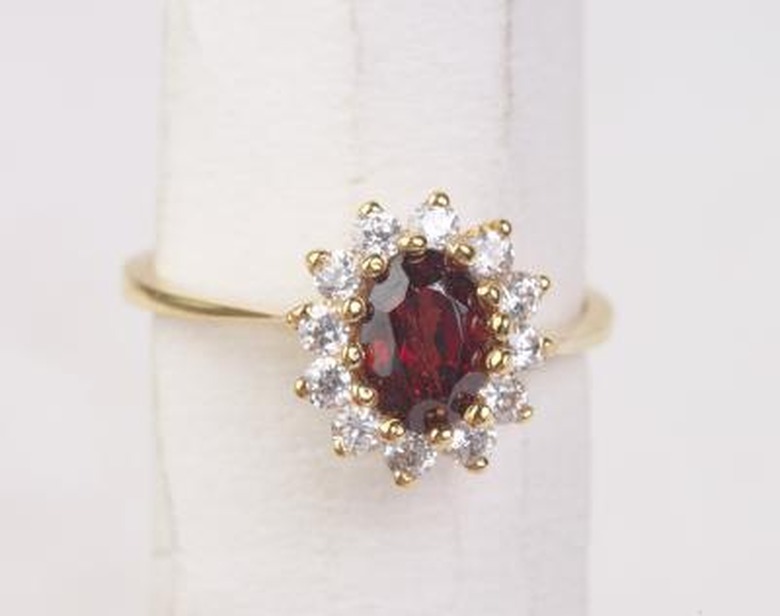How Are Lab Created Rubies Made?
Elements
Lab created rubies are made by combining a specific recipe of minerals, in order to produce a fiery red variety of lab grown crystals. There are two types of lab created rubies, which use different types of processing to create the red crystals. Both processes use the basic minerals necessary to create the red color associated with the ruby. The color is the result of combining aluminum oxide (which, by itself, is colorless) with chrome, creating a mineral known a corundum, or ruby. A number of other minerals such as titanium, rutile, vanadium, and iron can be used in trace amounts to produce variations in the depth and clarity of the red, including the highly-valued "pigeon blood" red.
Flame Fusion
Flame Fusion
Flame fusion rubies are among the cheapest of synthetic or lab created rubies, and are the least expensive and quickest to produce. They are created by dissolving a super-heated solution of aluminum oxide in lead oxide, then placed into a chemical solution where the growth of crystals occurs over a period of several hours. Because of the quick growth and lack of inclusions that the flame fusion process produces, the result is a glassy appearance with no inclusions, and often small gas bubbles occur. The quick process also produces curved growth planes – a characteristic unlike that of a natural ruby. Flame fusion rubies are generally used for costume jewelry, class rings, and inexpensive decorations.
Flux Growth
Flux Growth
Flux growth rubies are created in a process that can take up to six months to complete, and produce crystals that have qualities that are much closer to those of a naturally occurring ruby. Using a using a process in which the conditions of intense heat and controlled pressure provide a suitable growth medium for ruby crystals. The minerals are inserted into a molten mixture of chemicals, which is called "flux". The ruby crystals form within the flux, forming in straight growth planes, in the same manner as a natural ruby would. The flux grown ruby also has inclusions, and with the presence of titanium or rutile, can create the star-pattern of light reflection, known as an asterism.
Cite This Article
MLA
Jordan, Christi. "How Are Lab Created Rubies Made?" sciencing.com, https://www.sciencing.com/how-lab-created-rubies-made-4923685/. 24 April 2017.
APA
Jordan, Christi. (2017, April 24). How Are Lab Created Rubies Made?. sciencing.com. Retrieved from https://www.sciencing.com/how-lab-created-rubies-made-4923685/
Chicago
Jordan, Christi. How Are Lab Created Rubies Made? last modified March 24, 2022. https://www.sciencing.com/how-lab-created-rubies-made-4923685/
